Angelici, F. M.; and Luiselli, L. 2005. “Habitat Associations and Dietary Relationships between Two Genets, Genetta maculata and Genetta cristata.” Revue d'Écologie (La Terre et la Vie) 60:341-354.
Angelici, F. M.; Luiselli, L.; and Politano, E. 1999. “Distribution and Habitat of Selected Carnivores (Herpestidae, Mustelidae, Viverridae) in the Rainforests of Southeastern Nigeria.” Zeitschrift für Säugetierkunde 64:116-120.
Angelici, F. M.; Luiselli, L.; Politano, E.; and Akani, G. C. 1999. “Bushmen and Mammal Fauna: A Survey of the Mammals Traded in Bush-meat Markets of Local People in the Rainforests of Southeastern Nigeria.” Anthropozoologica 30:51-58.
Bisby, F.A.; Roskov, Y.R.; Orrell, T.M.; Nicolson, D.; Paglinawan, L.E.; Bailly, N.; Kirk, P.M.; Bourgoin, T.; Baillargeon, G.; and Ouvrard, D. (red.). 2011. "Genetta cristata." Species 2000 & ITIS Catalogue of Life: 2011 Annual Checklist. Reading, UK. Retrieved May 13, 2014.
- Available at: http://www.catalogueoflife.org/col/search/all/key/genetta+cristata/match/1
Boelens, Bo; Watkins, Michael; and Grayson, Michael. 2009. The Eponym Dictionary of Mammals. JHU Press.
Boudet, Ch. 10 January 2009. "Crested Genet." Mammals' Planet: Vs n°4, 04/2010. Retrieved May 13, 2014.
- Available at: http://www.planet-mammiferes.org/drupal/en/node/38?indice=Genetta+cristata
Boudet, Ch. 10 January 2009. "Subspecies Sheet: Benin Genet." Mammals' Planet: Vs n°4, 04/2010. Retrieved May 13, 2014.
- Available at: http://www.planet-mammiferes.org/drupal/en/node/39?ind
Coetzee, C.G. 22 August 1977. “Order Carnivora.” Pp. 1-42 in 1971-1977. The Mammals of Africa: An Identification Manual. Part 8 edited by J. Meester and H.W. Setzer. Washington, D.C.: Smithsonian Institution Press.
Corson, Docteur P.-J. October 2005. Les grands prédateurs d’Afrique: biologie, éthnologie et chasse. Brussels, Belgium: Éditions du Gerfaut.
Crawford-Cabral, J. 1981. “A New Classification of the Genets.” African Small Mammal Newsletter 6:8-10.
Crawford-Cabral, João. 1980. "The Classification of the Genets (Carnivora, Viverridae, genus Genetta)." Boletim da Sociedade Portuguesa de Ciências Naturais 20:97-114.
"Crested Genet." The Animal Files: Mammals > Carnivores. Retrieved May 13, 2014.
- Available at: http://www.theanimalfiles.com/mammals/carnivores/genet_crested.html
"Crested Genet." Earth's Endangered Creatures: Species Profiles: Africa > Endangered Mammals of Africa. Retrieved May 13, 2014.
- Available at: http://www.earthsendangered.com/profile.asp?gr=M&view=all&ID=1&sp=14580
"Crested Servaline Genet, Genetta cristata." redOrbit Reference Library Mammals. Retrieved May 13, 2014.
- Available at: http://www.redorbit.com/education/reference_library/animal_kingdom/mammalia/1112643883/crested-servaline-genet-genetta-cristata/
Driver, Stephanie (ed.). 2008. Exploring Mammals, Volume 3. Tarrytown, NY: Marshall Cavendish Corporation.
Duff, Andrew; and Lawson, Ann. 2004. Mammals of the World: A Checklist. Yale University Press.
Ewer, R.F. 1998. The Carnivores. Cornell University Press: Cornell Paperbacks.
Gaubert, Philippe; and Dufour, Sylvain. July 2013. “First Report of a Chinchilla Phenotype in Viverridae (Carnivora).” Small Carnivore Conservation 48:92-95. Retrieved May 13, 2014.
- Available at: http://www.smallcarnivoreconservation.org/home/wp-content/uploads/2013/08/SCC-48-11-Gaubert-Dufour.pdf
Gaubert, P.; Chalubert, A.; and Dubus, G. 2008. “An Interactive Identification Key for Genets and Oyans (Carnivora, Viverridae, Genettinae, Genetta spp. and Poiana spp.) Using Xper2.” Zootaxa 1717:39-50.
Gaubert, P.; Fernandes, C. A.; Bruford, M. W.; and Veron, G. 2004. "Genets (Carnivora, Viverridae) in Africa: An Evolutionary Synthesis Based on Cytochrome b Sequences and Morphological Characters." Biological Journal of the Linnean Society 81:589-610.
Gaubert, P.; Papeş, M.; Peterson, A.T. June 2006. "Natural History Collections and the Conservation of Poorly Known Taxa: Ecological Niche Modeling in Central African Rainforest Genets (Genetta spp.)." Biological Conservation 130(1):106–117.
Gaubert, P.; Taylor, P.J.; and Veron, G. 2005. “Integrative Taxonomy and Phylogenetic Systematics of the Genets (Carnivora, Viverridae, Genetta): A New Classification of the Most Speciose Carnivoran Genus in Africa.” Pp. 371-384 in African Biodiversity: Molecules, Organisms, Ecosystems edited by Bernard A. Huber, Bradley J. Sinclair, and Karl-Heinz Lampe. NY: Springer Science + Business Media, Inc.
Gaubert, Philippe; Weltz, Marjorie; and Chalubert, Antoine. 14 January 2008. “Genetta cristata." Base Genettes et Poianes. Paris: Université Pierre et Marie Curie. Retrieved May 13, 2014.
- Available at: http://lis-upmc.snv.jussieu.fr/genettes/web/fiches_fr/taxa/genetta_cristata.html
"Genet." AWF: What We Do > Wildlife Conservation > Genet. African Wildlife Foundation. Retrieved May 13, 2014.
- Available at: http://www.awf.org/wildlife-conservation/genet
"Genetta cristata." Animal Info: Endangered Animals of the World: Individual Species Index > Genetta cristata. Retrieved May 13, 2014.
- Available at: http://www.animalinfo.org/species/carnivor/genecris.htm
"Genetta cristata." The Marine Biological Universal Biological Indexer and Organizer NamebankID 5973890. Retrieved May 13, 2014.
- Available at: http://www.ubio.org/browser/details.php?namebankID=5973890
"Genetta cristata." The National Center for Biotechnology Information: Taxonomy ID235203. Retrieved May 13, 2014.
- Available at: http://www.ncbi.nlm.nih.gov/Taxonomy/Browser/wwwtax.cgi
"Genetta cristata (Crested Genet)." ZipcodeZoo: Species Identifier 5391. Retrieved May 13, 2014.
- Available at: http://zipcodezoo.com/animals/g/genetta_cristata/
"Genetta cristata: Crested Servaline Genet." Encyclopedia of Life. Retrieved May 13, 2014.
- Available at: http://eol.org/pages/1053882/details
"Genetta cristata Hayman, 1940." The Marine Biological Universal Biological Indexer and Organizer NamebankID 7138119. Retrieved May 13, 2014.
- Available at: http://www.ubio.org/browser/details.php?namebankID=7138119
"Genetta cristata Hayman In Sanborn, 1940." ITIS Standard Report: Taxonomic Serial Number 726259. Integrated Taxonomic Information System. Retrieved May 13, 2014.
- Available at: http://www.itis.gov/servlet/SingleRpt/SingleRpt?search_topic=TSN&search_value=726259
"Genetta cristata Hayman In Sanborn 1940." The Marine Biological Laboratory Universal Biological Indexer and Organizer NamebankID 11271812. Retrieved May 13, 2014.
- Available at: http://www.ubio.org/browser/details.php?namebankID=11271812
Gervais, Paul. 1855. Histoire naturelle des Mammifères: Carnivores, Proboscidiens, Jumentés, Bisulques, Édentés, Marsupiaux, Monotrèmes, Phoques, Sirénides et Cétacés. Paris: L. Curmer.
Gittleman, John L.; Funk, Stephan M.; Macdonald, David; and Wayne, Robert K. (eds.). 2001. Carnivore Conservation. Cambridge University Press: Conservation Biology 5.
Hayman, Robert William In Sanderson, Ivan T. 1940. "The Mammals of the North Gameroons Forest Area. Being the Results of the Percy Sladen Expedition to the Mamfe Division of the British Cameroons." Transactions of the Zoological Society of London 24(7):623-726.
Hunter, Luke; and Barrett, Priscilla. 2011. A Field Guide to the Carnivores of the World. London, Cape Town, Sydney, Auckland: New Holland Publishers (UK) Ltd.
Jennings, A. P.; and Veron, J. 2009. "Family Viverridae (Civets, Genets, and Oyans)." In: Don E. Wilson and Russel Mittermeier (Hrsg.) Handbook of the Mammals of the World Volume 1: Carnivores. Lynx Edicions.
Jukofsky, Diane for the Rainforest Alliance. 2002. Encyclopedia of Rainforests. Westport, CT: Oryx Press.
Kingdon, Jonathon; Happold, David; Butynski, Thomas; Hoffmann, Michael; Happold, Meredith; and Jan Kalina (eds.). 2013. Mammals of Africa, Volume 5: Carnivores, Pangolins, Equids and Rhinoceroses, edited by Jonathan Kingdon and Michael Hoffmann. Bloomsbury Publishing.
Kingsley, Mary H. 1897. Travels in West Africa. Congo Francais, Corisco and Cameroons. London: MacMillan.
- Available via Internet Archive at: https://archive.org/details/travelsinwestafr00kingrich
Kondo, H.; Tesar, J.; Cloud, D.; Kagan, L. (eds.). 1972. Civets, Genets, and Linsangs, Volume 2, 3rd Edition. Milan: Fratelli Fabbri Editori.
Larivière, Serge. 2004. "Civets, Genets, and Linsangs." Pp. 335-339 in Grzimek's Animal Life Encyclopedia, Second Edition. Volume 14: Mammals III, edited by Michael Hutchins, Devra G. Kleiman, Valerius Geist, and Melissa C. McDade. Farmington Hills, MI: Gale Group, Inc., division of Thomson Learning Inc.
Myers, P.; Espinosa, R; Parr, C.S.; Jones, T.; Hammond, G.S.; and Dewey, T.A. 2014. "Genetta cristata: Crested Servaline Genet." The Animal Diversity Web (online). University of Michigan Museum of Zoology. Retrieved May 13, 2014.
- Available at: http://animaldiversity.ummz.umich.edu/accounts/Genetta_cristata/classification/
Nowak, Ronald M. 1999. Walker's Mammals of the World, Sixth Edition. Volume I. Baltimore: Johns Hopkins University Press.
Powell, C.B.; and van Rompaey, H. 1998. “Genets of the Niger Delta.” Small Carnivore Conservation 19:1-7.
Rosevear, Donovan Reginald. 1974. The Carnivores of West Africa. London: Trustees of the British Museum (Natural History).
- Available via Biodiversity Heritage Library at: http://www.biodiversitylibrary.org/item/35416#page/7/mode/1up
Tognetti, Sylvia. 2014. "Western Africa." World Wildlife Fund: Places > Ecoregions > Terrestrial Ecoregions > Mangroves > Afrotropical. Retrieved May 13, 2014.
- Available at: http://worldwildlife.org/ecoregions/at1401
Van Rompaey, H.; and Colyn, M. 1998. “A New Servaline Genet (Carnivora, Viverridae) from Zanzibar Island.” South African Journal of Zoology 33:42-46.
Van Rompaey, H., Gaubert, P. & Hoffmann, M. 2008. "Genetta cristata." In: IUCN 2013. International Union for Conservation of Nature and Natural Resources Red List of Threatened Species. Version 2013.2. Retrieved May 13, 2014.
- Available at: http://www.iucnredlist.org/details/8998/0
Veron, Geraldine. 6 September 2010. "Phylogeny of the Viverridae and 'Viverrid-like' Feliforms." Pp. 64-91 in Carnivoran Evolution: New Views on Phylogeny, Form and Function, edited by Anjali Goswami and Anthony Friscia. Cambridge University Press.
Wilson, Don E.; and Cole, F. Russell. 2000. Common Names of Mammals of the World. Washington, D.C.: Smithsonian Institution Press.
Wilson, Don E.; and Reeder, DeeAnn M. (editors). 2005. Mammal Species of the World: A Taxonomic and Geographic Reference (3rd ed), Johns Hopkins University Press.
Wrobel, Murray (Editor). 2007. Elsevier's Dictionary of Mammals: Latin English German French Italian. Oxford, U.K.: Elsevier B.V.


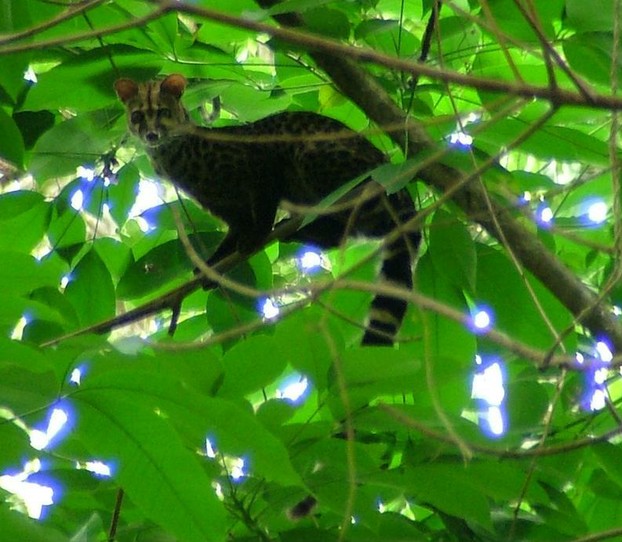
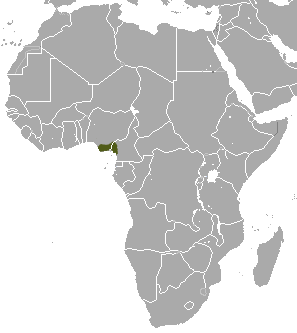
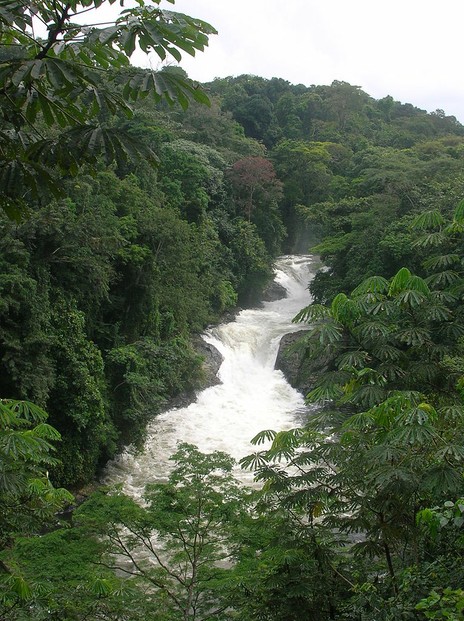
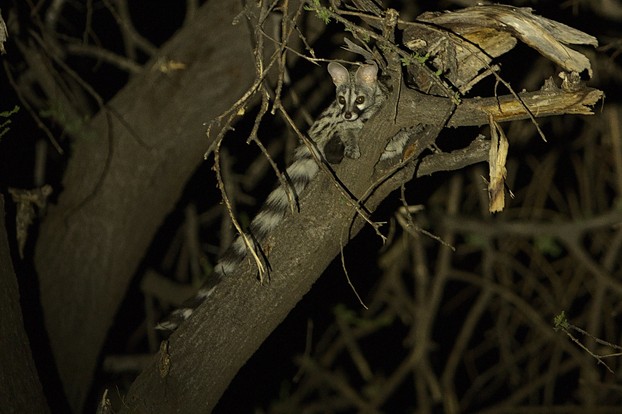
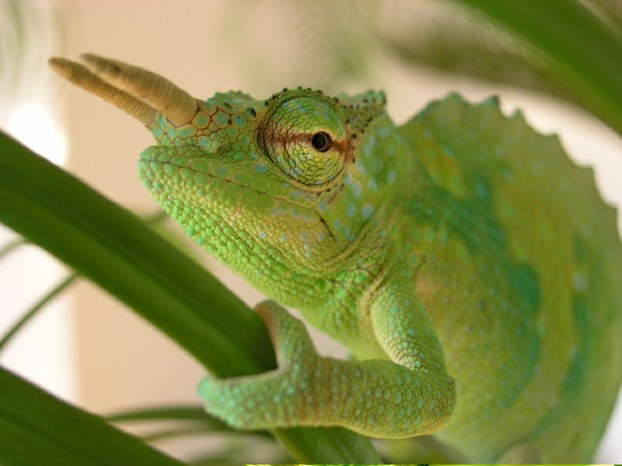
![Donovan Reginald Rosevear 1900-1986; British Museum (Natural History) Department of Zoology [Mammals] Trustees of the British Museum (Natural History) Donovan Reginald Rosevear 1900-1986; British Museum (Natural History) Department of Zoology [Mammals] Trustees of the British Museum (Natural History)](/static/uploads/en/module/image/2014/05/12/2014-05-12_20-27-10_195.622x621.jpg)
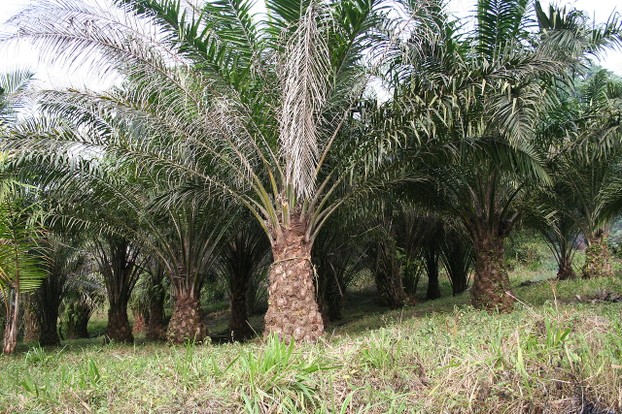
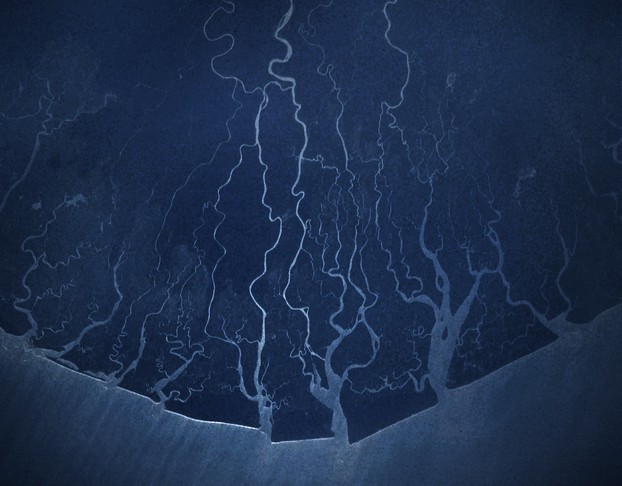
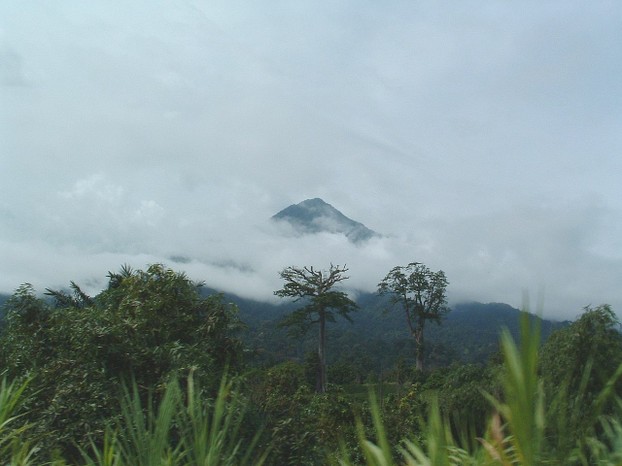
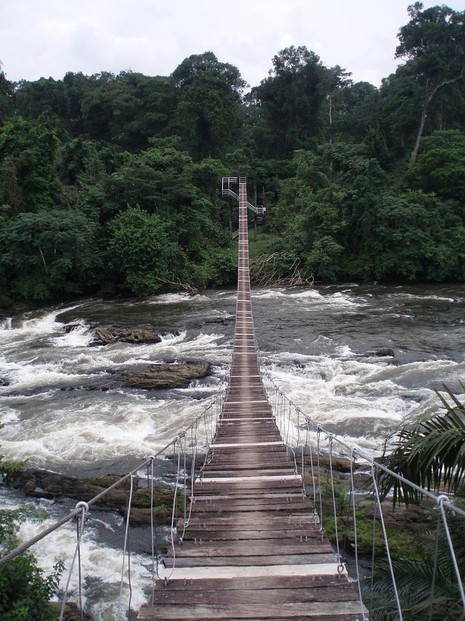




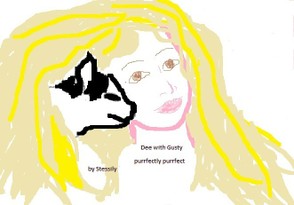
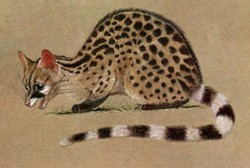

 Are Hawaiian Huakai Po Nightmarchers Avenging Halloween Thursday?on 10/02/2024
Are Hawaiian Huakai Po Nightmarchers Avenging Halloween Thursday?on 10/02/2024
 Mailing Addresses for 2023 Form 4868 Extending 1040 and 1040SR April 15, 2024, Due Dateon 04/15/2024
Mailing Addresses for 2023 Form 4868 Extending 1040 and 1040SR April 15, 2024, Due Dateon 04/15/2024
 Mailing Addresses for 2023 Forms 1040 and 1040SR Filed in 2024on 04/15/2024
Mailing Addresses for 2023 Forms 1040 and 1040SR Filed in 2024on 04/15/2024
 Mailing Addresses for 2022 Form 4868 Extending 1040 and 1040SR April 18, 2023, Due Dateon 04/13/2023
Mailing Addresses for 2022 Form 4868 Extending 1040 and 1040SR April 18, 2023, Due Dateon 04/13/2023

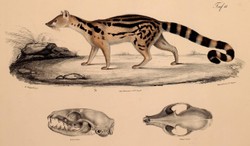
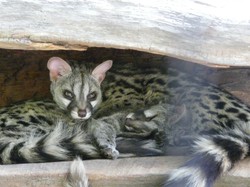
Comments